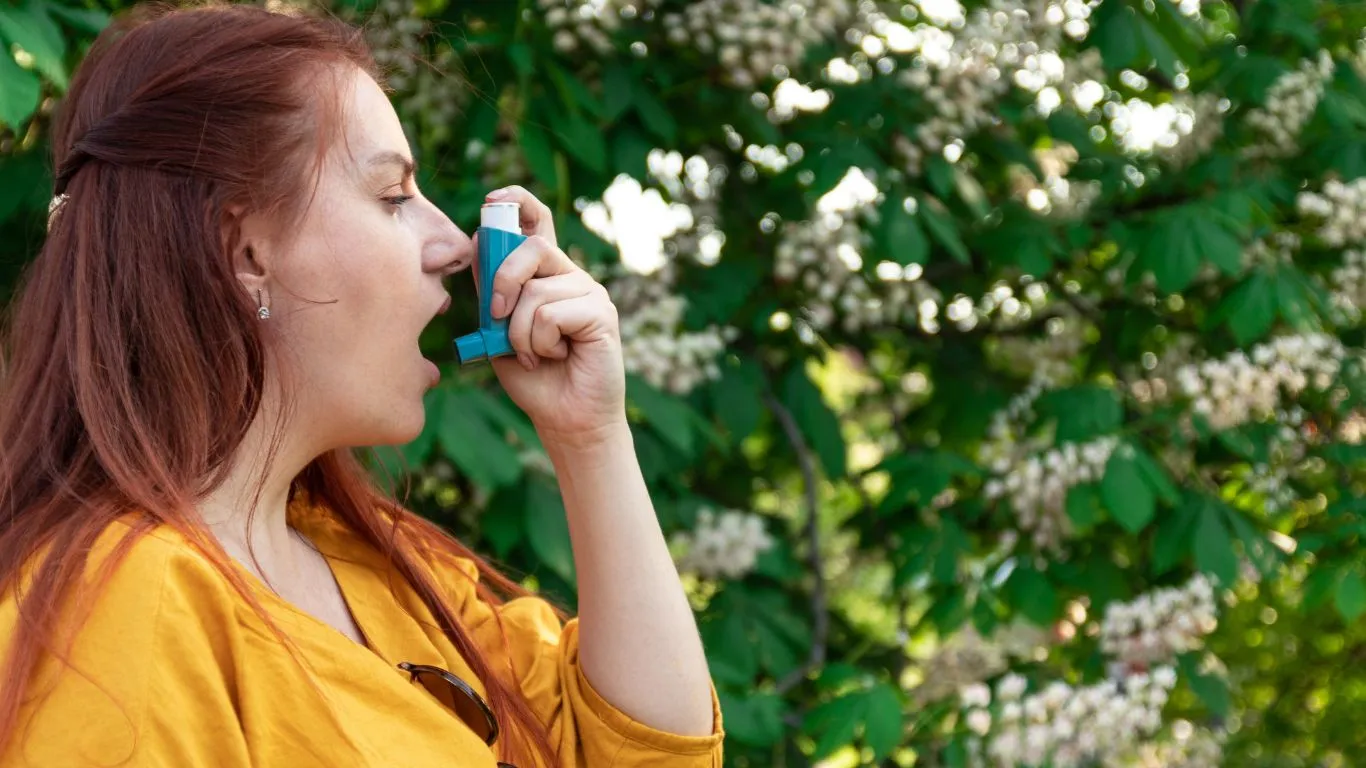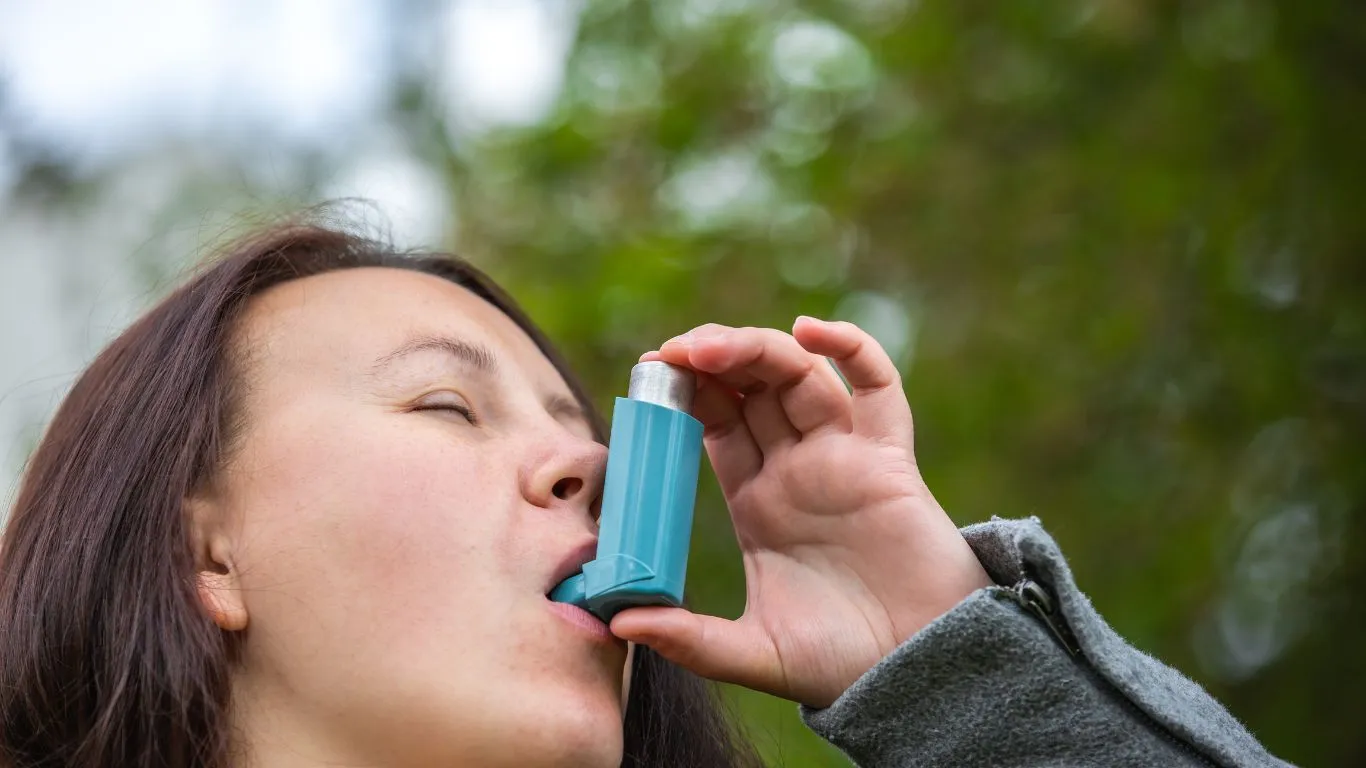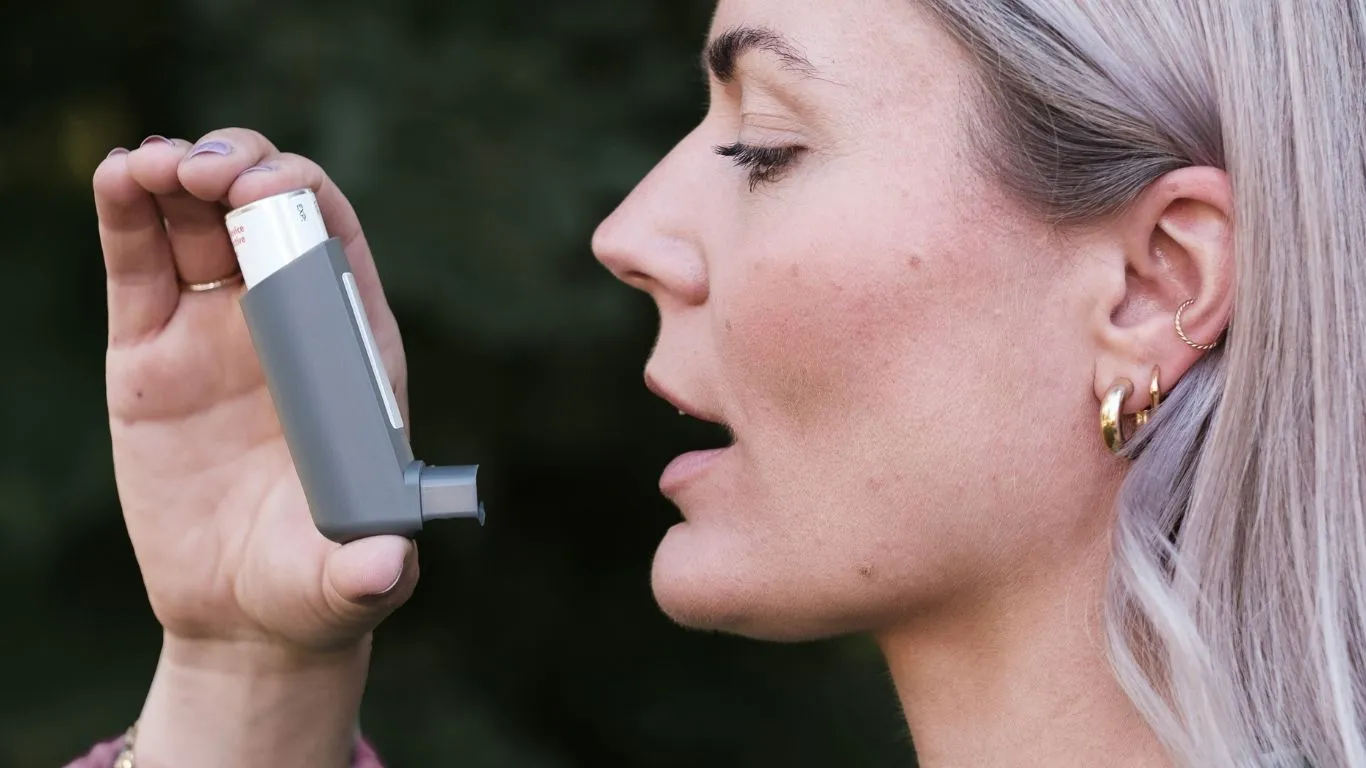How to Recognize Hidden Asthma Triggers & Breathe Easy Today
Asthma is tricky. You think you have it under control, but then—bam!—out of nowhere, your chest tightens, breathing becomes a struggle, and you’re left wondering what triggered it this time. If you’re nodding along, you’re not alone. One of the most frustrating things about managing asthma is figuring out how to recognize hidden asthma triggers. These are the sneaky culprits that aren’t always obvious but can set off an asthma flare-up when you least expect it.
Over the years, working with asthma patients, I’ve seen how these hidden triggers can make life miserable. The worst part? Many people don’t even realize what’s causing their symptoms. Let’s change that. In this guide, I’ll walk you through the unexpected triggers, the signs your environment might be working against you, and how to take control of your respiratory health.
Common Hidden Asthma Triggers You Might Be Overlooking

Sure, we all know pollen, dust, and pet dander can trigger asthma. But what about the lesser-known offenders that fly under the radar? Here are some surprisingly common triggers that might be making your asthma worse without you realizing it.
1. Your Own Home Might Be a Breeding Ground
I’ve had so many patients tell me they feel safest at home, only to discover that their home environment is actually one of their biggest triggers. Here’s why:
- Mold Growth: Even if you can’t see it, mold spores in damp areas (like bathrooms, basements, or under sinks) can trigger asthma.
- Cleaning Products: That “fresh” lemony scent? It might contain volatile organic compounds (VOCs) that irritate your airways.
- Air Fresheners & Candles: Some scented products release chemicals that can make breathing harder for sensitive lungs.
I once had a patient, Laura, who couldn’t figure out why her asthma was acting up despite keeping her home spotless. Turns out, her love for lavender-scented plug-ins was to blame! She swapped them for natural essential oils and noticed a huge difference.
2. That “Healthy” Workout Could Be a Problem
Believe it or not, the gym can be a hotbed for hidden asthma triggers. Here’s what to watch out for:
- Cold Air Exposure: Running outdoors in the winter can trigger exercise-induced asthma.
- Strong Fragrances: Gyms often use heavy-duty cleaners and air fresheners that can irritate your lungs.
- Rubber Mats & Equipment: Some gym flooring and yoga mats release chemicals that might trigger asthma symptoms.
If you’re experiencing symptoms during workouts, try switching up your routine. A warm-up indoors before heading outside or using an air purifier in your workout space can make a big difference.
How Your Daily Habits Could Be Worsening Your Asthma

We all have routines, but some everyday habits might be secretly making asthma harder to manage. Here’s what to keep an eye on:
3. Your Morning Cup of Coffee Might Not Be Helping
Caffeine can act as a mild bronchodilator, but for some people, it can also contribute to acid reflux, which is a major hidden asthma trigger. If you notice more asthma symptoms after your morning latte, acid reflux might be playing a role.
4. Stress and Anxiety – The Silent Triggers
Emotional health and asthma go hand in hand. Have you ever noticed that stress makes your breathing worse? That’s not a coincidence. When you’re anxious, your body releases stress hormones that can tighten airway muscles, making it harder to breathe.
- Mindfulness & Breathing Exercises: Simple techniques like diaphragmatic breathing can help keep stress-related asthma flares in check.
- Journaling Your Symptoms: Keeping track of when symptoms spike can help you identify if stress is a trigger for you.
A patient of mine, Mike, was convinced his asthma was only triggered by dust. But after we tracked his symptoms, we realized his worst flare-ups happened after stressful work meetings. Learning how to manage his anxiety helped improve his asthma dramatically.
Environmental Factors You Can’t See But Should Worry About

Sometimes, it’s not just what’s inside your home that’s the problem—it’s what’s outside, too.
5. Weather Changes and Air Quality
Have you ever noticed that your asthma gets worse on certain days even when you’re indoors? Here’s why:
- High Humidity: Creates the perfect breeding ground for dust mites and mold.
- Extreme Temperatures: Cold air can cause airway constriction, while heat can lead to poor air quality.
- Air Pollution: Smog, smoke, and car emissions can all be serious asthma triggers.
I always recommend checking the Air Quality Index (AQI) before heading outside, especially if you live in a city with high pollution levels.
Unexpected Triggers Hiding in Your Lifestyle

You might be doing everything by the book—taking your meds, avoiding pollen, keeping your house spotless—yet, somehow, your asthma still flares up. The truth is, hidden asthma triggers aren’t always found in the usual suspects. Sometimes, it’s our daily routines and habits that can make things worse without us realizing it.
6. Your Favorite Clothes Might Be a Problem
This one surprises a lot of people! I had a patient, Emma, who constantly struggled with wheezing and coughing, especially in the mornings. Turns out, the issue wasn’t her bedding or her diet—it was her clothes.
- Fabric Softeners & Detergents: Many brands use fragrances and harsh chemicals that leave residue on clothes, which can irritate airways.
- New Clothes & Formaldehyde: Some new clothes are coated with chemicals to prevent wrinkles and mildew during shipping—always wash them before wearing!
- Dust Mites in Closets: If your closet is packed with unworn clothes, it could be a breeding ground for dust mites.
If your asthma seems worse after getting dressed, switching to fragrance-free, hypoallergenic laundry products might be a game-changer.
7. Your Diet Could Be Sneakily Triggering Asthma
Believe it or not, what you eat can play a role in how well you breathe. While food allergies are an obvious culprit, there are also hidden dietary triggers that many people overlook.
- Sulfites: Found in dried fruits, wine, and some processed foods, sulfites can trigger asthma attacks in sensitive individuals.
- Histamines: Aged cheeses, fermented foods, and smoked meats contain histamines that may worsen inflammation in the airways.
- Acidic & Spicy Foods: These can lead to acid reflux, which in turn can aggravate asthma symptoms.
One of my patients, Mark, used to get frequent nighttime asthma attacks. We tracked his symptoms and found that spicy takeout dinners were triggering acid reflux, which in turn was making his asthma worse. Once he adjusted his diet, his symptoms improved dramatically.
Hidden Asthma Triggers in Your Workplace

Your workplace could be an asthma battlefield, and you might not even realize it. Whether you’re in an office, a warehouse, or a school, the environment you work in can have a significant impact on your respiratory health.
8. Office Air & Poor Ventilation
Ever walked into your office and immediately felt your chest tighten? That’s not your imagination—offices can be full of asthma triggers, including:
- Recycled Air: Many office buildings have poor ventilation, trapping dust, mold spores, and airborne irritants.
- Printer & Copier Emissions: These machines release tiny particles and chemicals that can irritate sensitive airways.
- Carpet & Upholstery: Old carpets and fabric-covered furniture can harbor dust mites and allergens.
If your symptoms worsen at work, consider bringing a small HEPA air purifier for your desk or requesting better ventilation from your employer.
9. Workplace Chemicals & Industrial Triggers
If you work in an environment where chemicals are used—such as a salon, factory, or construction site—you might be exposed to airborne irritants that can worsen asthma.
- Salon Workers: Hair dyes, sprays, and chemical treatments release fumes that can trigger symptoms.
- Healthcare Workers: Exposure to disinfectants, latex gloves, and even some medications can cause reactions.
- Construction & Manufacturing: Dust, fumes, and industrial chemicals can be serious asthma triggers.
One of my patients, a hairstylist, had no idea that her daily exposure to hair sprays and dyes was making her asthma worse. Once she started wearing a mask and improved salon ventilation, her breathing improved significantly.
Travel-Related Triggers You Should Watch Out For

Traveling is exciting, but it can also bring unexpected asthma challenges. Whether you’re flying, road-tripping, or staying in a hotel, there are hidden triggers everywhere.
10. Airplane Air & High Altitudes
Air travel can be tough on asthma sufferers. The low humidity and recycled air in planes can dry out airways, making symptoms worse. Not to mention, sudden altitude changes can affect breathing.
Travel tips for asthma sufferers:
- Carry your inhaler in your carry-on—never check it in your luggage.
- Use a scarf or mask to help filter out dry, recycled air.
- Stay hydrated to prevent your airways from drying out.
I always recommend patients check in with their doctor before traveling, especially if they’re heading to high-altitude destinations.
11. Hotel Rooms & Allergy Triggers
Hotels might look spotless, but that doesn’t mean they’re asthma-friendly. Many rooms have hidden allergens like:
- Dust Mites in Bedding: Always request hypoallergenic pillows and linens if possible.
- Strong Cleaning Products: Hotels often use harsh chemicals that leave lingering fumes.
- Old Carpets & Curtains: These can trap allergens, especially if the room hasn’t been aired out properly.
One trick I always recommend? Pack a travel-size HEPA air filter or bring your own pillowcase to reduce exposure to allergens.
How to Reduce Hidden Asthma Triggers in Your Daily Life

Now that we’ve uncovered the sneaky triggers that might be lurking in your environment, the big question is: What can you do about them? Managing asthma isn’t just about avoiding obvious triggers like smoke and pollen—it’s also about making small lifestyle adjustments to minimize exposure to the hidden ones.
12. Optimize Your Home Environment
Your home should be a safe space, not a trigger zone. Since we’ve already discussed how homes can harbor allergens, let’s talk about ways to reduce them.
- Invest in a HEPA Air Purifier: These devices can trap allergens and airborne particles that worsen asthma.
- Wash Bedding Weekly: Use hot water to kill dust mites that might be hiding in your sheets and pillowcases.
- Control Humidity Levels: Mold thrives in moisture, so keep indoor humidity between 30-50% to prevent growth.
I always recommend my patients check their home for hidden mold, especially in areas like under sinks, behind furniture, and in bathroom corners. You’d be surprised how often this turns out to be the missing piece of the puzzle.
13. Choose Fragrance-Free Products
We all love a good-smelling home, but those heavily scented candles, air fresheners, and even personal care products can contain chemicals that irritate the airways.
- Swap out chemical air fresheners for natural alternatives like baking soda or activated charcoal.
- Look for fragrance-free (not just “unscented”) laundry detergents and cleaning supplies.
- Be mindful of perfumes and body sprays—they can trigger symptoms even in small amounts.
I once had a patient who kept having random flare-ups at work but was fine at home. After some trial and error, we realized it was her coworker’s strong cologne! A simple conversation and a switch to milder scents made a huge difference.
Better Lifestyle Choices for Long-Term Asthma Control

Asthma management isn’t just about avoiding triggers—it’s also about strengthening your lungs and overall health. Here are some lifestyle habits that can help.
14. Maintain a Healthy Diet
Nutrition plays a bigger role in asthma control than most people realize. While we’ve already discussed food triggers, let’s focus on what you should be eating.
- Omega-3 Fatty Acids: Found in salmon, flaxseeds, and walnuts, these help reduce airway inflammation.
- Magnesium-Rich Foods: Dark leafy greens, bananas, and nuts can help relax airway muscles.
- Antioxidant-Rich Fruits & Veggies: Berries, oranges, and bell peppers support lung function.
One of my patients started drinking green smoothies packed with anti-inflammatory foods, and within a few months, he noticed fewer asthma symptoms. Food really can be medicine!
15. Exercise Smart, Not Hard
Many people with asthma avoid exercise because they’re afraid it will trigger an attack. The truth? Regular exercise can actually strengthen your lungs—if you do it the right way.
- Choose low-impact activities like swimming, yoga, or cycling.
- Always warm up before exercising to prevent sudden airway constriction.
- Breathe through your nose to humidify the air before it reaches your lungs.
If you’re new to exercise, start slow and track your breathing patterns. I always remind my patients that movement is essential, but you need to find what works best for your body.
16. Manage Stress & Sleep Well
Stress and lack of sleep can make asthma symptoms worse, yet they’re often overlooked in treatment plans.
- Try deep breathing exercises or meditation to reduce stress.
- Stick to a regular sleep schedule—poor sleep can increase airway inflammation.
- Use an extra pillow to elevate your head if acid reflux triggers nighttime symptoms.
A good night’s sleep is one of the best things you can do for your asthma. If you constantly wake up coughing or wheezing, take a closer look at your sleeping environment.
Final Thoughts & Next Steps
Asthma management isn’t just about medication—it’s about recognizing and minimizing your triggers, making smart lifestyle choices, and advocating for your health. By understanding how to recognize hidden asthma triggers, you take a huge step toward better control and fewer flare-ups.
If you suspect an unknown trigger is making your asthma worse, start tracking your symptoms. Keep a journal, note what you were exposed to, and look for patterns. Sometimes, the smallest change—like switching laundry detergents or avoiding cold air—can make a world of difference.
Want to dive deeper into asthma-friendly living? Here are some trusted resources:
- Centers for Disease Control and Prevention (CDC)
- Mayo Clinic
- American Academy of Allergy, Asthma & Immunology
Always consult your healthcare provider before making any changes to your asthma management plan.
Disclaimer: This article is for informational purposes only and should not be considered medical advice. Always consult a healthcare professional for personalized guidance.

Bianca Nala is a compassionate Nurse Practitioner with a strong background in primary and respiratory care. As a health writer for Healthusias.com, she combines her clinical expertise with a talent for clear, relatable storytelling to help readers better understand their health. Bianca focuses on topics like asthma, COPD, chronic cough, and overall lung health, aiming to simplify complex medical topics without losing accuracy. Whether she’s treating patients or writing articles, Bianca is driven by a single goal: making quality healthcare knowledge accessible to everyone.






